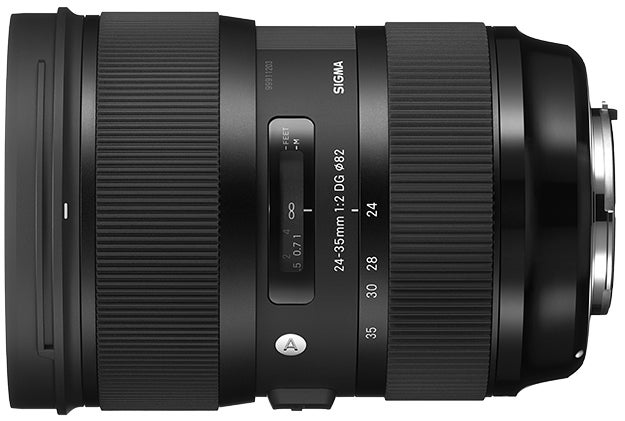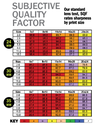Lens Test: Sigma 24–35MM F/2 DG HSM Art
Sigma's new wide-angle is full of surprises

We may earn revenue from the products available on this page and participate in affiliate programs. Learn more ›

When we tested Sigma’s 18–35mm f/1.8 lens in our November 2013 issue, we saw it as a one-of-a-kind phenomenon: the industry’s first f/1.8 constant-aperture zoom and the fastest for cameras with APS-C sensors. Well, Sigma managed to top itself. And its 24–35mm f/2 DG HSM Art lens, the first full-frame f/2 zoom, provides roughly the same optical performance as Sigma’s 24mm f/1.4 and 35mm f/1.4 primes.
This $999 (street) lens has 18 elements in 13 groups, including large-diameter aspherical elements. This ups the weight to 2.16 pounds, though it balanced nicely on our test cameras (the Canon EOS-1D X in the lab and EOS 5D Mark III in the field). Both zoom and focusing rings are amply sized and ribbed, but the focusing scale in feet is almost invisible; the meter scale is fine.
The nine-blade aperture produces nice bokeh, but its minimum is only f/16, which makes deep-focus, long-exposure landscape and sunset shots more difficult. Autofocus is quick and virtually silent.
On our optical bench in the Popular Photography Test Lab, the lens garnered excellent SQF results for sharpness and contrast at all focal lengths. Comparisons are difficult, given its speed and focal-length range, but it outpaced full-frame f/2.8 wide-angle zooms, edging out Canon’s EF 16–35mm f/2.8L II at 24mm and Nikon’s older 17–35mm f/2.8D at 28mm. More surprising was how well it did against prime lenses in its range, especially at maximum aperture, where sharpness is often an issue. While Sigma’s own 24mm f/1.4 logged a better SQF score at f/2 at our highest magnification of 20×24 (it’s one of the sharpest lenses we’ve ever tested), at 35mm this new zoom lens did slightly better than Sigma’s 35mm f/1.4. It also outshone Canon and Nikon’s 24mm f/1.4 models as well as Canon’s 35mm f/2.
In our tests using DxO Analyzer 5.3, distortion fell in the Slight range at 24mm and 35mm (similar to the all those primes, as well as Canon’s zoom), but at the mid-focal length of 30mm, this lens tamed distortion to an Imperceptible (0.08%) pincushion, nice for a wide-angle. And it iced the 2004 Nikon zoom, which showed Very Visible distortion at 28mm and 35mm.
Vignetting, gone by f/3.5 at our three tested focal lengths, beat the Canon primes by more than a stop and both the wide-angle zooms at 24mm and 35mm. Plus, close focusing, at 10.37 at 35mm, led the pack by as much as an inch, and this zoom also provided the best subject magnification, with a maximum ratio of 1:3.16.
Finally, consider the price. With this zoom, you get three popular wide-angle focal lengths at a fast speed, losing only a stop compared with the top primes. If you were to buy Sigma’s 24mm and 35mm f/1.4s, you’d spend nearly twice a much. So if you’re a wide-angle fan, take a close look at this trailblazing zoom.
TEST RESULTS
Distortion: At 24mm, 0.22% (Slight) barrel; at 30mm, 0.08% (Imperceptible) pincushion; at 35mm, 0.15% (Slight) pincushion
Light falloff: At 24mm, gone by f/3.5; at 30mm, gone by f/3.5; at 35mm, gone by f/3.5
Close-focusing: 10.45 inches
Max. magnification ratio: At 24mm, 1:7.28; at 30mm, 1:6.51; at 35mm, 1:3.16
SPECIFICATIONS
24–35mm (24.84–34.30mm tested), f/2 (f/1.92–2.14 tested), 18 elements in 13 groups. Focus ring turns 130 degrees. Zoom ring turns 60 degrees. Focal length marked at 24-, 28-, 30-, and 35mm.
Diagonal view angle: 84–63 degrees
Weight: 2.16 lb Filter size: 82mm
Mounts: Canon AF, Nikon AF, Sigma AF
Included: Lenshood, soft case
Street price: $999
INFO: sigmaphoto.com
